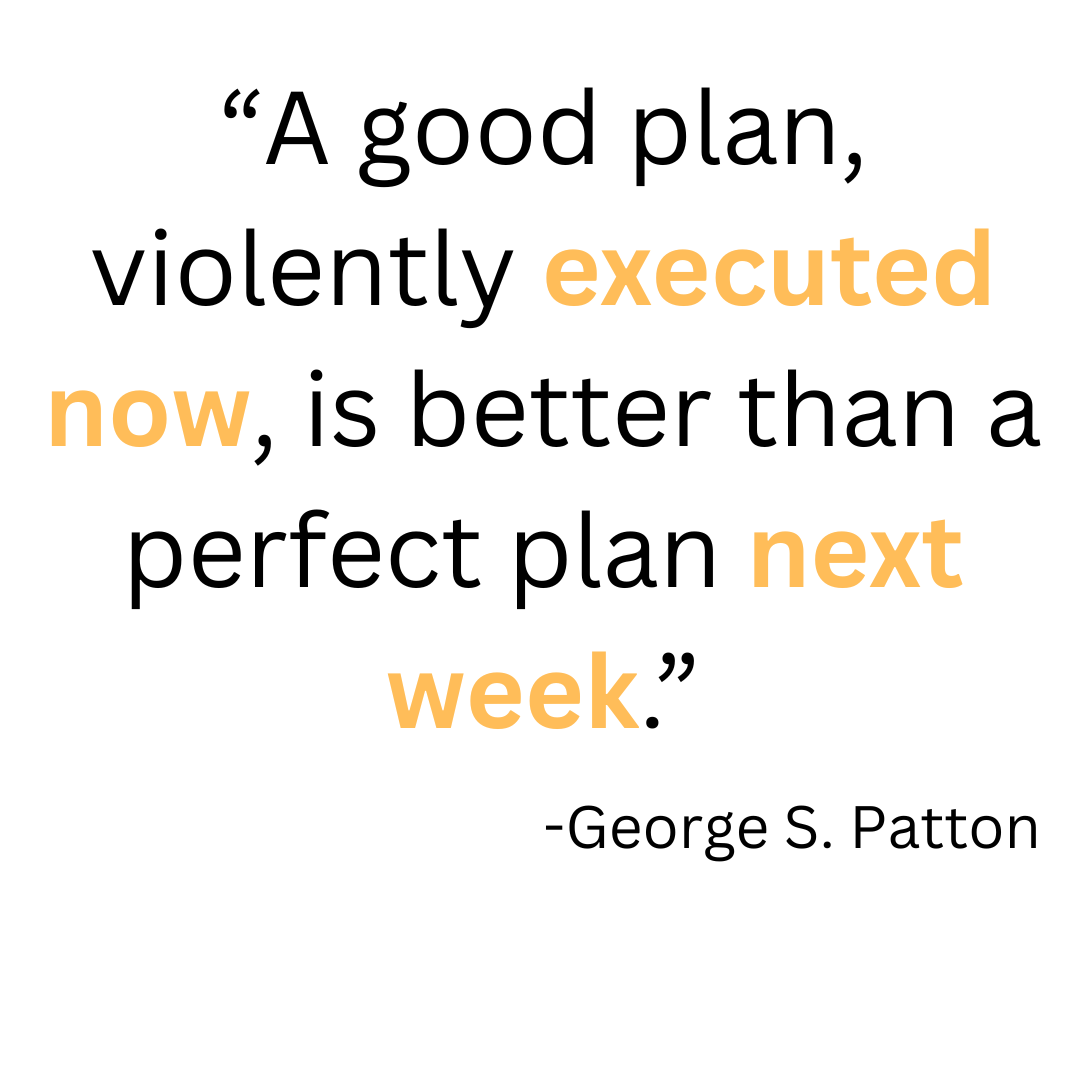Planning Your 2023 Marketing Strategy
By Zach Emly • November 8, 2022 • Digital Marketing
Category
By Zach Emly • November 8, 2022 • Digital Marketing
By Zach Emly • November 8, 2022 • News, Digital Marketing
As a new year approaches companies of all shapes and sizes begin planning for the following year’s marketing strategy. Surprisingly nearly every year organizations scratch their heads at where to begin.
This year, we have you covered.
As a marketing partner for many local, national and international companies, we’ve helped our fair share of companies create and implement their marketing strategies.
Your organization’s marketing strategy may be more or less complex depending on the type of business and your company’s goals. The information below is a simple framework that will help guide you along the way to creating your marketing plan.

Every good plan starts with the end in mind. Too often organizations step into marketing either a) without a plan at all or b) following the latest trends without a goal in mind. For your marketing strategy to be successful, it must be developed from your marketing goals.
Determining marketing goals
Your marketing goals should always stem from a company’s overall goals. For example, if one of your company goals is to break into a new market segment, then gaining visibility would be a good objective for marketing.
Additionally, you should aim to create S.M.A.R.T (Specific, Measurable, Attainable, Relevant, Timely) goals.
When you create goals in this way, it provides confidence that your marketing will in fact take you in the direction you need to go.
Plan. Do. Review.
Most people are familiar with the “plan do review” process. It’s really what you’re working towards as you work through this framework. One thing that’s important to keep in mind when creating goals and planning is that you have a way to track and measure these goals.
As you create your marketing objectives, you need to know how you are going to track and measure results.
Don’t be afraid of what the numbers reveal. If the marketing activity is not generating the right results, then it means that an adjustment needs to be made.

Everything you do should align with how people buy. The content you create, the marketing channels you utilize, the assets you create, etc.
Mapping out the buyer’s journey allows you to align your marketing efforts with how people want to buy. By doing this you reduce friction in the buying process making it easier for people to use your services.
Having the buyers’ journey in mind helps lay the foundation for the marketing activities and messaging you will need and when. Without it, you're just guessing as to whether or not your message will resonate with consumers.
Mapping out the journey is not always easy, but it’s worth it.
How to create the buyer’s journey
The best advice I can give you when it comes to the buyer’s journey is not to assume you know everything about your customer base and potential customers. Let the data help you define what customers want. There are several ways to gather data for a buyer’s journey.
Once you have the data, use attribution modeling to show the journey people chose to go from stranger to customer and the needs they had along the way.
The buyers’ journey is all about finding out what a buyer is thinking about when they first discover a need for a product/service (awareness stage), what made them buy what they did (purchase stage), and everything that happened in the meantime (consideration stage).

Creating this journey can be as simple as paying attention to the questions potential customers ask.
One of the biggest mistakes companies make when developing their marketing strategy is to disregard the buyer’s journey or the company’s overall goals. When deciding which tactics to implement and which solutions to explore, make sure that they have a strategic purpose in achieving company goals and connecting with buyers’ needs.
There are a number of ways to determine which solutions your company needs to implement. Everyone will do this a little differently. But, here are some tips on developing and identifying the right solutions:
Use all the information you gather to reverse engineer what solutions will best help you meet your goals. Based on your findings, you should have a good indicator as to what strategies, tactics or marketing channels will best help meet marketing goals.
This is your chance as a marketing expert or team to dream a little! This is my favorite part of the marketing process and where MOJO really shines. Take time here to be as creative as you like. Don’t limit yourself here, because the next phase of your planning will provide the necessary restraints.

It’s a dream for many marketers to be given an infinite budget to do whatever creative ideas they can think of. Most of us, unfortunately, need to work within a budget.
It’s not all bad though. Budgeting plays an important role in establishing our marketing strategy.
If you’ve ever been asked to do something but not given the budget to do it, then you know exactly what I’m referring to with the second point.
A budget ensures that marketing remains profitable for the company but also, that resources are set aside for marketing to do its job. Here is how to create one.
Creating a budget
It’s recommended that a marketing budget be 2-10% of the company’s annual revenue. I’ve seen it much lower and slightly higher. What’s most important is that the budget is enough to meet the needs of the team.
We understand that not everyone will have the ability to create their own budget. However, internal planning is necessary to best use assets appropriately.
Budget is more than marketing dollars
Every company has a limit on its resources and this doesn't always mean financial. Your team may have the funds for a project but manpower or expertise is limited.
When budgeting for projects everything needs to be taken into consideration. You may not have to create a budget for time utilization, however, it’s worth keeping other resources in mind.
Know how and when to ask for more
I’ve worked with many solopreneurs and single-man marketing teams who simply don’t have a budget or not one that allows them to do what they need to do. In these cases, there are ways to open the door for gaining more wiggle room in the budget.
In order for resources to be reassigned to marketing, value has to be established.
When the goals and strategies are finely detailed and it’s evident that in order to succeed with your efforts certain things need to be done, then it makes it easier to justify providing more resources to the marketing department. Without proving the necessity of the marketing initiatives there’s no reason for additional resources to be provided.

The most challenging part of a new strategy is consistent implementation. In my early years of being a marketing consultant, I thought getting started was the most challenging part for a company. Experience has led me to find that there are plenty of people and companies who can start, but it’s a small percentage of those who follow through with consistent implementation.
Having a plan to keep marketing consistent is a vital piece of a marketing strategy.
What the implementation plan should include
There’s a lot of effort that goes into creating a marketing plan, thankfully, the implementation plan aspect of it is much simpler. An implementation plan should be simple and easy to follow. It should give guidance as to who is doing what, when they should do it, and other details to keep things running smoothly.
Here’s what you should include:
At its most basic, you will want to answer who, what, when, where, and how. The plan can be as loose or detailed as your team needs it to be.
The purpose of this isn’t to control the team’s day-to-day activities but rather to keep up the momentum once your marketing plan is in action.
This also helps a marketing team determine if they are capable of implementing to the extent they need. Charting the course ahead of time will help realize the need for additional help.

The purpose of a strategic plan is not to design perfection, but rather to incite execution. Don’t get me wrong, the plan should be a good one. You should invest time and effort into it to ensure that the plan makes sense and will propel the business forward. But the intent should not be to design the perfect plan.
As time goes on buyer behavior may change, your industry may change, technology will change and your company goals may change. Changes can affect your marketing strategy causing you to switch gears. This is simply part of the marketing process.
If your plan focuses on the in-depth details of each marketing tactic you may find it hard to adjust. If you instead create the plan around the idea of execution then it’s much easier to remain agile allowing you to adjust course when necessary.
We understand this process can feel overwhelming at times, especially if you’re a one-man or one-woman show. Just take it one step at a time and don’t overthink it. You can always come back and adjust as needed.
If this is something you need assistance with, then contact us and we would be happy to point you in the right direction.